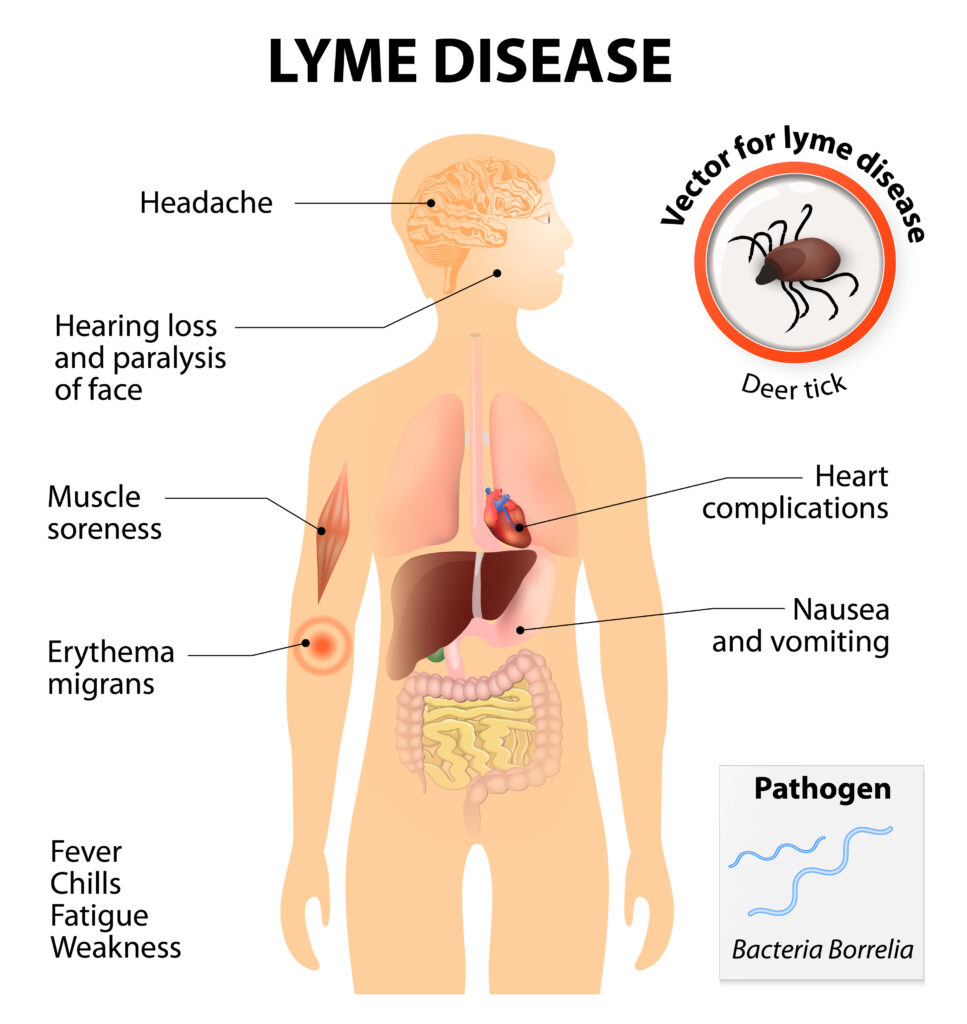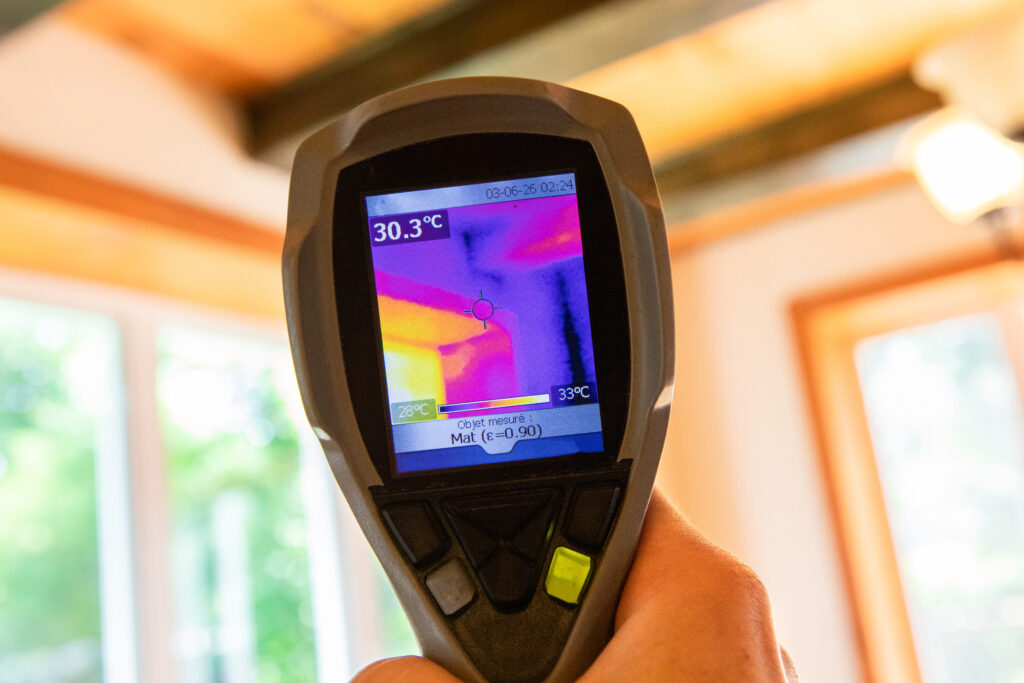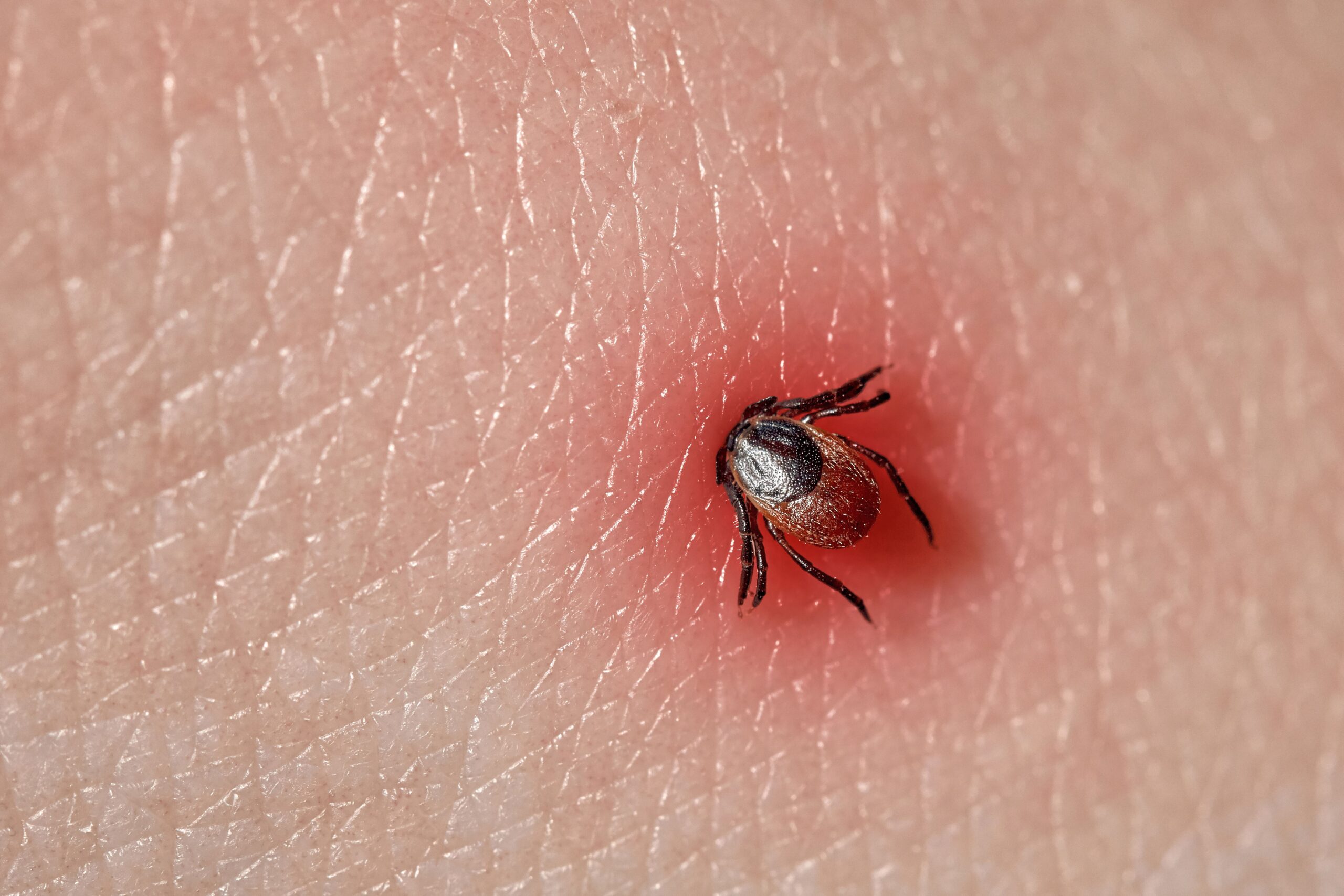It’s no secret that having mold in your home can cause many health-related issues, especially for those who already suffer from compromised immune systems. However, recent studies have shown that the impacts of mold exposure may be even more severe than we previously realize and can even lead to serious consequences in regard to one particular condition: Lyme disease.
While Lyme disease is often misunderstood by many, the reality is that this illness impacts nearly half a million Americans every single year, and precautions need to be taken to ensure that homes and other properties are free from any toxins that could cause the symptoms related to this disease to become worse. In this article, we’ll be examining the connection between Lyme disease and mold, as well as providing insight into what you can do to make sure your home is a safe environment for those suffering from this illness.

What Is Lyme Disease?
Lyme disease is a type of bacterial infection caused by the bacterium Borrelia burgdorferi and often begins in the exposed area of the body but can quickly spread if left untreated. Currently, around 476,000 Americans are diagnosed with and treated for Lyme disease every year, and its symptoms can range in severity depending on how early the patient is diagnosed. Some of the most common symptoms include:
- Fever
- Headache
- Fatigue
- Rash in the affected area
- Muscle aches
- Swollen lymph nodes
In many cases, Lyme disease is often confused with other illnesses like the common cold and seasonal flu, which makes it challenging to identify at first. However, if left untreated, the infection will continue to spread and can cause long-term damage to the body’s systems.
For example, Lyme carditis is a separate diagnosis that occurs when Lyme disease has been left untreated long enough to cause inflammation of the heart, as well as arthritis, facial palsy, and meningitis.

What Causes Lyme Disease?
Thankfully, Lyme disease has an obvious culprit that can help you determine if your symptoms are the result of this infection. This particular bacterium is transmitted to humans through tick bites. That means that you’re most likely to encounter Lyme disease if you’ve recently been bitten by a tick and the area appears to be red or itchy.
Although, some individuals aren’t aware that they’ve been bitten by an infected tick until they receive a Lyme disease diagnosis. That’s why it’s essential always to be mindful of your surroundings when spending time outside, especially if you’re handling animals, as ticks are often transferred to humans through direct contact with another host.
Much research has been conducted to determine if Lyme disease can be transmitted through other means, like in the air or via another type of insect bite, but no evidence has been found to connect Lyme disease to these issues.
How Is Lyme Disease Treated?
When detected early, Lyme disease is treated by antibiotics and ointments for the affected area if needed. In most cases, this disease will clear up within a few weeks of treatment. Of course, extreme cases of Lyme disease do occur, and though it is rare, some patients will need to be hospitalized to address severe symptoms.
How To Prevent Lyme Disease:
While preventing Lyme disease entirely is nearly impossible, there are a few steps you can take to reduce your likelihood of being infected. Here’s how:
Use Insect Repellent
Ticks and other insects infect humans by directly biting the skin. Using high-quality insect repellents can not only discourage ticks from biting, but they can also help keep these pests away from you altogether.
Cover Your Skin
We all like to be comfortable outside, but if you know you’re in an area that is prone to ticks, try covering your arms with long sleeves, wearing longer pants, and close-toed shoes. The less skin you have exposed, the less likely you’ll be to be bitten by a tick.
Apply Pesticides
If you like a rural area or have already seen ticks on your property, applying pesticides can help keep these pests away from your home. This reduces your risk of Lyme disease and also creates a better environment for animals, and other makes that are impacted by tick bites.
Act Quickly
Of course, you can take these precautions and still manage to have a tick land on you. If you see a tick of any size on your body, remove it immediately and pay close attention to any visible bites that might be left behind. This will allow you to take quick action if symptoms of Lyme disease begin to develop.
Lyme Disease and Mold: The Connection
Now, you might be wondering, what does Lyme disease have to do with the presence of mold in your home? While Lyme disease is not caused by mold, there is growing evidence to support the belief that mold exposure can worsen its symptoms and make recovery more difficult for individuals who are already suffering. For instance, the presence of mold in your home can lead to:
Weakened Immunity
Lyme disease, like other types of infections, weakens the body’s immune system and makes patients more vulnerable to other health-related issues while they recover. This can lead to more severe health concerns and extend the length of time it takes for you to feel like yourself again.
Increased Inflammation
One of the most serious responses to prolonged mold exposure is a condition called Chronic Inflammatory Response Syndrome, or CIRS. This condition increases inflammation in the body as the immune system attempts to battle mold toxins, which can lead to uncomfortable symptoms like body aches, fatigue, and sudden weight fluctuations.
With that in mind, individuals who have Lyme disease are much more likely to develop CIRS as a result of mold exposure. Even worse, this overlap can result in a heightened risk of Lyme carditis, an extreme symptom of Lyme disease that directly impacts the heart.
Exposure to Mycotoxins
Mycotoxins, or small toxins that are emitted from mold, are also a significant risk for individuals suffering from Lyme disease. These toxins have been shown to increase inflammation in the body, worsening Lyme disease symptoms and making it more difficult for patients to recover. Some of the most notable signs of mycotoxin exposure include:
- Red, itchy, or irritated skin
- Skin shedding
- Uncoordinated muscle movements
- Nausea
- Vomiting
- Diarrhea
- Swollen throat
- Nasal discharge
This, coupled with the symptoms of Lyme disease, can lead to an extremely long, painful road to recovery for affected individuals.
Overlapping Symptoms
Finally, diagnosing Lyme disease is a time-sensitive issue that needs to be addressed as quickly as possible. However, since bacterial infections and mold exposure have similar onset symptoms, it can be challenging to determine what the cause of your symptoms actually is. We recommend having regular mold tests performed on your home to eliminate this factor and help you and your medical provider achieve a diagnosis more effectively.

Why Check For Your Home For Mold?
There are many reasons to have your home tested for mold, including protecting the integrity of your property and improving your long-term quality of life. Here are the top reasons why you should have your home checked for mold:
Property Damage
When left untreated, mold can wreak havoc on walls, sidings, and other vital structures in your home. Regular mold testing helps ensure that your property won’t be damaged by dangerous mold infestations and can save you thousands of dollars in damage-related costs.
Managing Symptoms
Lyme disease, as well as other illnesses that impact the immune system, comes with many symptoms that can reduce your overall quality of life. Ensuring that your home is safe from toxins is critical to managing the symptoms and helping you to feel better faster.
Improving Treatments
Since most cases of Lyme disease can be treated at home with antibiotics and other medications, having your home checked for mold can reduce the risk of outside toxins impacting your ability to recover in an effective way. Ultimately, this helps you live a healthier, more balanced life regardless of a Lyme disease diagnosis.
Overall Well-Being
Connection to Lyme disease aside, having mold in your home can lead to many other health-related concerns. We suggest having your home tested for mold regularly to protect the well-being of you and your family today, tomorrow, and for many years to come.

Where To Find A Reliable Mold Testing Company
IndoorDoctor is committed to creating safer, healthier homes for residents across America and beyond. As an accredited mold testing provider by the American Council of Accreditation Certification, we follow stick testing protocols to ensure that our clients get the most accurate results possible. We also provide comprehensive recommendations for all types of mold infestations.
If you suspect that your home has a mold issue, or you’d just like the peace of mind from knowing that you and your family are protected, don’t put your next mold test on hold. Connect with a member of our team to schedule your inspection today.
References:
Bay Area Lyme Disease Foundation: https://www.bayarealyme.org/blog/the-connection-between-mold-illness-and-lyme-disease/#:~:text=Mold%20illness%20causes%20extreme%20inflammation,assume%20the%20problems%20are%20psychosomatic.




